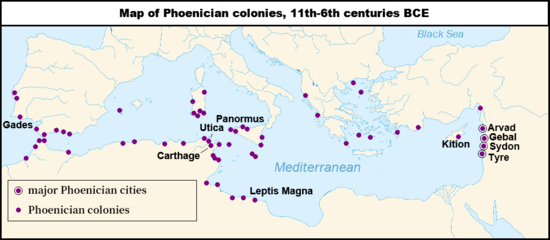Faro, Portugal
Faro | |
|---|---|
      Clockwise: Aerial view of Faro; Cathedral of Faro; city gates; Castelo de Faro; historic center; Estói Palace. | |
 Flag  Coat of arms | |
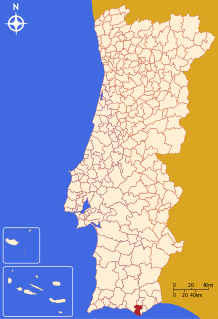 | |
| Coordinates: 37°00′58″N 07°56′06″W / 37.01611°N 7.93500°WCoordinates: 37°00′58″N 07°56′06″W / 37.01611°N 7.93500°W | |
| Country | |
| Region | Algarve |
| Intermunic. comm. | Algarve |
| District | Faro |
| Parishes | 4 |
| Government | |
| • President | Rogério Bacalhau (PSD) |
| Area | |
| • Total | 202.57 km2 (78.21 sq mi) |
| Population (2019) | |
| • Total | 60,995[1] |
| Time zone | UTC±00:00 (WET) |
| • Summer (DST) | UTC+01:00 (WEST) |
| Postal code | 8000 |
| Local holiday | September 7 |
| Website | Official website |
Faro (/ˈfɑːroʊ/ FAR-oh, Portuguese: [ˈfaɾu] (![]() listen)) is a municipality, the southernmost city and seat of the district of the same name, in the Algarve region of southern Portugal.[2] With an estimated population of 60,995 inhabitants in 2019[1] (with 39,733 inhabitants in the city proper,[3] making it the biggest city and second most populous municipality in the Algarve (after Loulé) and one of the biggest in Southern Portugal), the municipality covers an area of about 202.57 km2 (78.21 sq mi).[4]
listen)) is a municipality, the southernmost city and seat of the district of the same name, in the Algarve region of southern Portugal.[2] With an estimated population of 60,995 inhabitants in 2019[1] (with 39,733 inhabitants in the city proper,[3] making it the biggest city and second most populous municipality in the Algarve (after Loulé) and one of the biggest in Southern Portugal), the municipality covers an area of about 202.57 km2 (78.21 sq mi).[4]
History[]
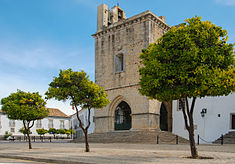

The Ria Formosa lagoon attracted humans from the Palaeolithic age until the end of prehistory. The first settlements date from the fourth century BC, during the period of Phoenician colonization of the western Mediterranean.[5] At the time, the area was known as Ossonoba, and was the most important urban centre of southern Portugal and commercial port for agricultural products, fish, and minerals.[5]
Between the second and eighth centuries, the city was under the domain of the Romans, then the Byzantines, and later Visigoths, before being conquered by the Moors in 713.[5] From the third century onwards and during the Visigothic period, it was the site of an Episcopal see,[5] the Ancient Diocese of Ossonoba (306-688). The Byzantine presence has endured in the city walls' towers that were built during the Byzantine period.
With the advent of Moorish rule in the eighth century, Ossonoba retained its status as the most important town in the southwest corner of the Iberian Peninsula.[5] In the 9th century, it became the capital of a short-lived princedom and was fortified with a ring of defensive walls.[5] At this time, in the 10th century, the name Santa Maria began to be used instead of Ossonoba. By the 11th century, the town was known as Santa Maria Ibn Harun.[5]
During the Second Crusade soon after the Anglo-Norman forces took Lisbon in 1147 a detachment of this group sacked Faro on their way to the Holy Land. Again in 1217, during the Fifth Crusade, a Frisian fleet of crusaders on their way to Acre, sacked and burned the city.[6]
During the 500 years of Moorish rule, some Jewish residents of Faro made written copies of the Old Testament. One of Faro's historical names in Arabic is ʼUḫšūnubaḧ. The Moors were defeated and expelled in 1249 by the forces of the Portuguese King Afonso III. With the decline of the importance of the city of Silves (which was made the regional bishopric as Diocese of Silves shortly during and properly after the Reconquista), Faro took over the role of administration of the Algarve area.
Portuguese Kingdom[]



After Portuguese independence in 1143, Afonso Henriques and his successors began an expansion into the southern Iberian territory occupied by the Moors.[5] Following the conquest by D. Afonso III, in 1249, the Portuguese referred to the town as Santa Maria de Faaron or Santa Maria de Faaram.[5] In the following years, the town became prosperous, due to its secure port and exploitation of salt. Consequently, by the beginning of the Portuguese Age of Discovery, the town was well positioned to become a leading commercial centre.[5]
In the 14th century, the Jewish community began to grow in importance. In 1487, Samuel Gacon began printing the Pentateuco in Hebrew, the first book printed in Portugal.[5] The Jewish community of Faro had long been a dominant force in the region, with many artisans and merchants contributing heavily to the economy and city development,[5] but this level of prosperity was interrupted in December 1496 by an edict of Manuel I of Portugal, expelling those who did not convert to Christianity. As a result, officially, Jews no longer remained in Portugal.[5] In the place of the Jewish village of Vila Adentro, the convent of Nossa Senhora da Assunção was founded and patronised by Queen Leonor, wife of the king.[5]
Manuel I promoted the development and expansion of the city; 1499 had the construction of a hospital, the Church of Espírito Santo (or Church of the Misericórdia), a customshouse, and a slaughterhouse, all near the shoreline.[5]
By 1540, John III of Portugal had elevated Faro to the status of city, then in 1577, the bishopric of the Algarve was transferred from Silves,[5] which retains a co-cathedral, to the present Diocese of Faro.
In 1597, the city was sacked by English privateers led by Robert Devereux, 2nd Earl of Essex. The resultant fires damaged the walls, churches, and other buildings.[5] At the same time, English troops seized the library of the Bishop of Faro, then Fernando Martins de Mascarenhas, which eventually became part of the collection of the University of Oxford's Bodleian Library.[5] Among the looted books was the first printed book in Portugal: a Torah in local Hebrew (Judeo-Español), printed by Samuel Gacon at his workshop in Faro.[5]
Throughout the 17th and 18th centuries, the city was expanded, with a series of walls during the period of the Restoration Wars (1640-1668), encompassing the semicircular front to the Ria Formosa.[5]
The western city of Lagos had become the capital of the historical province of Algarve in 1577, but this all changed with the 1755 Lisbon earthquake.[5] It affected many settlements across the Algarve, including Faro, which suffered damage to churches, convents (specifically the Convent of São Francisco and Convent of Santa Clara), and the episcopal palace, in addition to the walls, castle towers and bulwarks, barracks, guardhouses, warehouses, customshouses, and prison.[5]
Much of the greater devastation across the coastal and lowland regions was caused by a tsunami, which dismantled fortresses and razed homes. Almost all the coastal towns and villages of the Algarve were heavily damaged by the tsunami, except Faro, protected by the sandy banks of the Ria Formosa lagoon.[5] With the capital Lagos devastated, Faro became the administrative seat of the region the following year, 1756.[5]
Geography[]


The municipality of Faro is divided into two distinct areas, the coastline, part of the Parque Natural da Ria Formosa (Nature Park of Ria Forma) and the barrocal, characterized by hills and valleys, populated with typical Algarvan vegetation.[7]
The nature park was created by Decree-Law 373/87, on 8 December 1987, and is considered one of the seven natural wonders of Portugal, with a beach that is around 7 km (4 mi) from the downtown.[7] It includes the river and a lagoon system, interspersed with dunes, forming a small islands and peninsulas, that protect a large area of marshes, channels, and islets.[7] The beaches in Faro are situated on the peninsula of Ancão and island of Culatra, along the corridor of the nature park.[8] The park is a rich and complex aquatic ecosystem, consisting of barrier islands, marshes, and channels, comprising sandy shorelines that separate the waters of the Ria Formosa and Atlantic Ocean.[8] The beaches of Faro and Barrinha/Barra de São Luís, are located on the Ancão peninsula, the beach of Barreta on the Ilha Deserta, and the beaches of Farol and Culatra are located on the Ilha Culatra.[8] The barrier islands are separated by tidal flats and shallows, including (from west to east) the Barra do Ancão/Barra de São Luís, the Barra de Santa Maria/Barra do Farol, and the Barra da Culatra/Barra da Armona (in the municipality of Olhão).[8]
Annually, many species of aquatic migratory birds transient northern Europe and nest there during the winter.[7] These include flamingos, terns, pied avocets, Eurasion wigeons, and common chaffinches.[7]
Within the town are gardens and open spaces, among which are the Manuel Bivar Garden, Alameda João de Deus Garden, and the Mata do Liceu.[7]
The variety of species and natural conditions result in the region being a popular ecotourism zone, promoting birdwatching, boating trips into the delta, kayaking along the Ria Formosa, pedestrian trails, and biking tours, accompanied by nature guides.[7] The municipality is crossed by the southern Ecovia do Algarve, a bicycling circuit that connects the Algarve to the rest of Europe.[7]
Climate[]
Faro has a hot-summer Mediterranean climate (Köppen: Csa), moderated by a transitioning Portugal-Canary current giving a certain resemblance to Southern California that is not heated in the summer by the Mediterranean Sea like Algarve. Given this region is highly susceptible to the difference of precipitation throughout the seasons of the year, in the future scarcity of water could appear in conjunction with the increase of temperature and less incidence of rains.
Summers are warm to hot and sunny with average daytime maximum temperatures of 27–35 °C (81–95 °F). Summer warmth can linger well into October. The weather in the winter is generally mild by European standards, managing around 6 hours of sunshine each day, with temperatures averaging around 8–16 °C (46–61 °F) in the coldest month. The city receives most of its rainfall over the winter; rain is scarce between June and September. The annual average temperature is around 17.5 to 18.5 °C and the annual rainfall is around 500 millimetres (19.69 in). The average sea temperature is 16–17 °C (61–63 °F) in January rising to 22–24 °C (72–75 °F) in August and September. Higher sea water temperatures are reached if the weather patterns produce a significant outflow of warmer surface water out of the Mediterranean which bathe the coastal Algarve with much warmer water.[9][10][11]
With over 3000 hours of sunshine a year, Faro is often regarded as the sunniest city in Europe.[12][13][14] July and August are the sunniest months and December the dullest.
| hideClimate data for Faro (FAO), 1981-2010 normals, extremes 1981-present, sun hours 1971-1995 | |||||||||||||
|---|---|---|---|---|---|---|---|---|---|---|---|---|---|
| Month | Jan | Feb | Mar | Apr | May | Jun | Jul | Aug | Sep | Oct | Nov | Dec | Year |
| Record high °C (°F) | 21.9 (71.4) |
24.7 (76.5) |
28.9 (84.0) |
30.1 (86.2) |
33.6 (92.5) |
37.1 (98.8) |
44.3 (111.7) |
39.6 (103.3) |
37.4 (99.3) |
33.3 (91.9) |
28.6 (83.5) |
24.0 (75.2) |
44.3 (111.7) |
| Average high °C (°F) | 16.1 (61.0) |
16.9 (62.4) |
19.1 (66.4) |
20.4 (68.7) |
22.8 (73.0) |
26.4 (79.5) |
29.2 (84.6) |
28.8 (83.8) |
26.6 (79.9) |
23.2 (73.8) |
19.6 (67.3) |
17.0 (62.6) |
22.2 (72.0) |
| Daily mean °C (°F) | 12.0 (53.6) |
12.8 (55.0) |
14.8 (58.6) |
16.1 (61.0) |
18.4 (65.1) |
21.9 (71.4) |
24.2 (75.6) |
24.1 (75.4) |
22.3 (72.1) |
19.3 (66.7) |
15.7 (60.3) |
13.3 (55.9) |
17.9 (64.2) |
| Average low °C (°F) | 7.9 (46.2) |
8.7 (47.7) |
10.5 (50.9) |
11.8 (53.2) |
14.0 (57.2) |
17.3 (63.1) |
19.1 (66.4) |
19.4 (66.9) |
18.0 (64.4) |
15.3 (59.5) |
11.7 (53.1) |
9.6 (49.3) |
13.6 (56.5) |
| Record low °C (°F) | −1.2 (29.8) |
−1.2 (29.8) |
2.3 (36.1) |
3.6 (38.5) |
6.7 (44.1) |
8.0 (46.4) |
11.9 (53.4) |
13.1 (55.6) |
9.9 (49.8) |
7.8 (46.0) |
2.7 (36.9) |
1.2 (34.2) |
−1.2 (29.8) |
| Average precipitation mm (inches) | 59.3 (2.33) |
52.0 (2.05) |
39.4 (1.55) |
38.6 (1.52) |
21.7 (0.85) |
4.3 (0.17) |
1.8 (0.07) |
3.9 (0.15) |
23.2 (0.91) |
60.1 (2.37) |
90.4 (3.56) |
114.1 (4.49) |
508.8 (20.03) |
| Mean monthly sunshine hours | 182.1 | 172.0 | 242.6 | 253.6 | 305.0 | 326.9 | 360.6 | 344.9 | 279.1 | 227.0 | 191.6 | 159.0 | 3,044.4 |
| Percent possible sunshine | 59 | 56 | 65 | 64 | 68 | 74 | 81 | 82 | 75 | 65 | 63 | 53 | 67 |
| Source: IPMA[10][15] | |||||||||||||
Human geography[]

Administratively, the municipality is divided into four civil parishes (freguesias):[17]
- Faro (Sé e São Pedro)
- Conceição e Estoi
- Montenegro
- Santa Bárbara de Nexe
International relations[]
Faro is twinned with:[18]
Transport[]


Faro is served by a transport network connecting it to the Algarve, and by extension, other European markets. Faro is about 3 hours and 30 minutes by air from the principal European destinations, and 2 hours and 30 minutes from Lisbon, along the A2, and less than 1 hour from Andalusia, along the A22.[19]
It receives through the International Airport millions of visitors annually, with 45 airlines serving this airport, including many low-cost airlines.[20] In recent years, the number of visitors travelling through the airport has increased as more and more low-cost airlines compete to offer cheap flights to the Algarve.[20] The transport facilities to and from Faro airport and the centre of Faro include taxicabs and a bus line.[19]
Faro is served by the centrally located Faro railway station, and a smaller halt in the east of the city at Bom João.[21] The main station is operated by the national railway operator Comboios de Portugal (CP). Which operates the Alfa Pendular, Intercidades, CP Regional, and a special service during the summer the InterRegional line. The Alfa Pendular service connects Faro to the North and terminates in Porto. The Intercidades and InterRegional services connect Faro to Lisboa. The CP Regional service operates across the east and west Algarve and connects Faro to Lagos in the west Algarve, and Vila Real de Santo António in the east Algarve. Bom João is only served by the CP Regional trains heading east. Despite the proximity of Seville, it is not connected by train.[22]
The town is served by a public transport network that include minibuses, local bus lines, and regional services across the Algarve.
Due to its position along the coast, a need exists to connect the shoreline communities with the outlying with various islands; with the exception of the island of Faro, most are accessible only by boat service.[23] Throughout the year (from the commercial wharf or Portas do Mar wharf, depending on the time of year), regular and tourist services are operated along the estuary.[23]
Culture and entertainment[]
The Faro city holiday is on 7 September.[24] The students' festival (Semana Académica da Universidade do Algarve), organized every year by students from the University of the Algarve, is also an important event in Faro.[25]
The Faro motorcycle club is responsible for one of the largest motorcycle events in Portugal and Europe.[26]
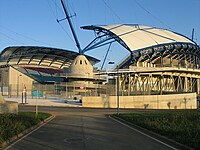
Sports[]
A 30,000-seat stadium Estádio Algarve, shared by the cities of Faro and Loulé, was one of the venues of the Euro 2004 football championship, and is also the temporary home ground of the Gibraltar national football team. Louletano Desportos Clube (a club from the city of Loulé) and Sporting Clube Farense (from Faro) also use smaller municipal stadiums. The stadium is also used for concerts, festivals, and other events.
Notable people[]
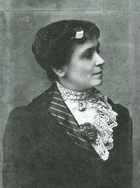

- Bakr Ben Yahia (born 9th C) an important Marrano figure in Medieval Portugal
- Madragana (born ca.1230) mistress to king Afonso III of Portugal
- Francisco Barreto (1520–1573) a soldier, explorer and an officer in Morocco
- José Maria da Ponte e Horta (1824–1892) a Portuguese noble, Governor of Angola, Macau and Mozambique
- Sebastião Custódio de Sousa Teles (1847–1921) a senior politician and military officer
- Maria Veleda (1871–1955) an educator, journalist and activist
- Raul Pires Ferreira Chaves (1889–1967) a civil engineer and inventor
- Adelino da Palma Carlos (1905–1992) the first Prime Minister of Portugal after the Carnation Revolution of 1974
- Carlos Quintas (born 1951) a stage and TV actor and singer[27]
- Sara Martins (born 1977) a Portuguese-born French actress of Cape Verdean descent[28]
- Diogo Piçarra (born 1990) a singer, won the Portuguese version of Pop Idol in 2012.
Sport[]
- Manuel Balela (born 1956) a football coach
- José Rafael (born 1958) a retired footballer
- Ana Dias (born 1974) a long-distance and marathon runner; four-time Olympian
- Rui Machado (born 1984) a retired professional tennis player
- Inês Murta (born 1997) a tennis player
- Vitinha (born 2000) a Portuguese professional footballer
References[]
- Notes
- ^ Jump up to: a b "População residente: total e por grandes grupos etários". Pordata. Retrieved 4 May 2021.
- ^ Algarve/Southern Portugal (GeoCenter Detail Map). GeoCenter International Ltd. 2003. ISBN 3-8297-6235-6.
- ^ "União de Freguesias de Faro". www.cm-faro.pt (in Portuguese). Retrieved 4 May 2021.
- ^ "Statistics Portugal". Ine.pt. Retrieved 10 July 2015.
- ^ Jump up to: a b c d e f g h i j k l m n o p q r s t u v w x Câmara Municipal, ed. (2015), História (in Portuguese), Faro (Algarve), Portugal: Câmara Municipal de Faro
- ^ Villegas-Aristizábal, Lucas, "A Frisian Perspective on Crusading in Iberia as Part of the Sea Journey to the Holy Land, 1217–1218," Studies in Medieval and Renaissance History, 3rd Series 15 (2018, Pub. 2021): 88-149. https://www.academia.edu/37460772/A_Frisian_Perspective_on_Crusading_in_Iberia_as_part_of_the_Sea_Journey_to_the_Holy_Land_1217_1218
- ^ Jump up to: a b c d e f g h Câmara Municipal, ed. (2015), Natureza (in Portuguese), Faro, Portugal: Câmara Municipal de Faro
- ^ Jump up to: a b c d Câmara Municipal, ed. (2015), Praias (in Portuguese), Faro, Portugal: Câmara Municipal de Faro
- ^ Berte, Elena; Panagopoulos, Thomas (3 July 2014). "Enhancing city resilience to climate change by means of ecosystem services improvement: a SWOT analysis for the city of Faro, Portugal". International Journal of Urban Sustainable Development. 6 (2): 241–253. doi:10.1080/19463138.2014.953536. ISSN 1946-3138. S2CID 153909896.
- ^ Jump up to: a b "IPMA - 008". Meteo.pt. Retrieved 10 July 2015.
- ^ Ltd, Copyright Global Sea Temperatures-A.-Connect. "Europe sea temperatures | Sea Temperatures". www.seatemperature.org. Retrieved 19 April 2019.
- ^ "The sunniest places on Earth". The Telegraph.
- ^ Sanchez-Lorenzo, Arturo; Brunetti, Michele; Calbó, Josep; Martin-Vide, Javier (2007). "Recent spatial and temporal variability and trends of sunshine duration over the Iberian Peninsula from a homogenized data set". Journal of Geophysical Research. Arturo Sanchez‐Lorenzo, Michele Brunetti, Josep Calbó, Javier Martin‐Vide. 112 (D20): D20115. Bibcode:2007JGRD..11220115S. doi:10.1029/2007JD008677.
- ^ Sanchez‐Lorenzo, Arturo; Calbó, Josep; Brunetti, Michele; Deser, Clara (2009). "Dimming/brightening over the Iberian Peninsula: Trends in sunshine duration and cloud cover and their relations with atmospheric circulation". Journal of Geophysical Research. Arturo Sanchez-Lorenzo, Josep Calbó, Michele Brunetti, Clara Deser. 114 (D10): D00D09. Bibcode:2009JGRD..114.0D09S. doi:10.1029/2008JD011394.
- ^ "Faro 1971-1995 normals (sunshine)" (PDF). IPMA. Retrieved 4 February 2021.
- ^ "Faro (08554) - WMO Weather Station". NOAA. Retrieved 28 March 2019.
- ^ Diário da República. "Law nr. 11-A/2013, page 552 48" (PDF) (in Portuguese). Retrieved 22 July 2014.
- ^ "Geminações". cm-faro.pt (in Portuguese). Faro. Retrieved 11 December 2019.
- ^ Jump up to: a b Câmara Municipal, ed. (2015), Como Chegar (in Portuguese), Faro, Portugal: Câmara Municipal de Faro
- ^ Jump up to: a b Câmara Municipal, ed. (2015), Aeroporto (in Portuguese), Faro, Portugal: Câmara Municipal de Faro
- ^ Câmara Municipal, ed. (2015), Transporte Ferroviário (in Portuguese), Faro, Portugal: Câmara Municipal de Faro
- ^ Trains in the Algarve. wetravelportugal.com. Retrieved 20 April 2020.
- ^ Jump up to: a b Câmara Municipal, ed. (2015), Barco para ilhas (in Portuguese), Faro, Portugal: Câmara Municipal de Faro
- ^ "CRÓNICA DE FARO: 7 de Setembro, dia da cidade". Jornal do Algarve (in Portuguese). 7 September 2019. Retrieved 7 May 2021.
- ^ Lemos, Pedro (14 May 2019). "Semana Académica recebeu «mais de 30 mil pessoas»". Sul Informação (in Portuguese). Retrieved 7 May 2021.
- ^ "Concentração internacional de motos". www.cm-faro.pt (in Portuguese). Retrieved 7 May 2021.
- ^ Carlos Quintas, IMDb Database retrieved 05 June 2021.
- ^ Sara Martins, IMDb Database retrieved 05 June 2021.
- Sources
- Valla, Margarida, A Fortificação Moderna nas duas Cidades Portuárias: Faro e Setúbal (PDF) (in Portuguese), Faro, Portugal: Câmara Municipal de Faro
External links[]
| Wikimedia Commons has media related to Faro. |
| Wikisource has the text of the 1911 Encyclopædia Britannica article Faro (town). |
| Wikivoyage has a travel guide for Faro. |
- Official municipal website (in Portuguese)
- GCatholic - successive bishoprics of Ossobona, Silves and Faro
| Municipality of Faro District (Algarve) |
|
|---|
 |
 |
 |
 |
 |
 |
 |
 |
 |
 |
 |
 |
 |
 |
 |
 |
| Albufeira | Alcoutim | Aljezur | Castro Marim | Faro | Lagoa | Lagos | Loulé | Monchique | Olhão | Portimão | São Brás de Alportel | Silves | Tavira | Vila do Bispo | Vila Real de Santo António |
- Faro, Portugal
- Municipalities of the Algarve
- Towns of the Algarve
- Cities in Portugal
- Populated places in Faro District
- Port cities and towns in Portugal
- Seaside resorts in Portugal
- Municipalities of Faro District
- Phoenician colonies in Portugal

